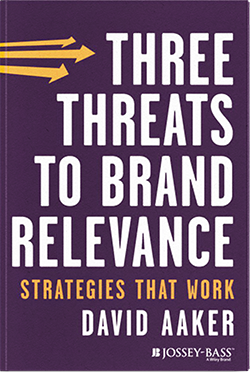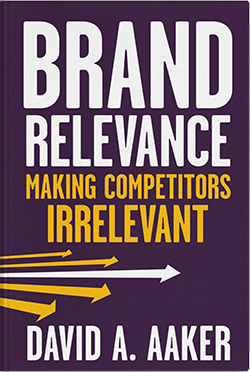BLOG
How Purposeful Always and Dove Campaigns Delivered Business Impact
Both campaigns help women and girls rise above attitudes that limit them and hold them back.
Many strong brands have a vision that includes a higher purpose such as environmental stewardship, healthy eating or third-world water safety. These programs make a difference with regard to corporate responsibility. But do they really help the brand and business? Can the investment in a higher purpose have a brand rationale?
Consider the efforts of Always and Dove to improve the self-esteem of girls. What impact do the campaigns have on the two brands? And how is that impact measured?
Always: Encouraging High Self-Esteem for Women
In 2014, Always launched a three-minute video by award-winning director Lauren Greenfield, #LikeAGirl that showed the stereotypical view of women from the perspective of boys, men, and women as well doing things like running, throwing, or fighting “like a girl.” The caricature was one of awkward incompetence. The assumption was that girls are not equal to boys in these activities, an assumption that clearly affected young girls as they got older.
The “like a girl” line was pejorative. The video then showed the stark difference in the ways actual girls aged around 10 defined the phrase. These girls tended to make confident, serious efforts at running, throwing and fighting.
Always re-ran the video in 1-minute form during the Super Bowl to great effect. The message: Girls’ confidence plunges during puberty and Always wants to change that. It wants to change what “like a girl” stands for, making it mean amazing things instead of acting as a put-down.
Always’ “Like a Girl” campaign is a natural outgrowth of the brand’s 30-year-old efforts in puberty education, in which it has reached over 17 million girls across 65 countries. It is influenced by research that shows that fifty percent of girls report a drop in confidence after their first period. Always saw a problem and felt it was the right brand to address it.
The “Like a Girl” program is a long-term effort for Always, involving video variants plus multiple programs and partners. For example, in another video Always showcases Karlie Harman who became a female football quarterback for her high school team and gives “like a girl” a very different meaning. It encouraged girls to tweet all the amazing things that they recall doing “like a girl” with a promise to post the best tweets. It also joined the official list of partners in Sheryl Sandberg’s “Ban Bossy” campaign, working to ban the “b” word (bossy) from the vocabulary of people in the environment of young girls. Vocabulary matters.
Dove: Showing Women Their Real Beauty
Dove’s “Campaign for Real Beauty” started in 2004 and was also informed by research on female self-esteem. It was designed to make women aware that real beauty is not based on a standard of young, model-thin bodies with excessive or elaborate make-up and hairstyling. The goal was to fundamentally change the way that women are perceived and to fundamentally change women’s self-esteem.
The campaign started with advertisements showing real women that may have been older or heavier but who Dove believed exhibited beauty. Global ads invited people to vote on whether a particular model was “Fat or Fit,” “Withered or Wonderful,” “Flawed or Flawless” and other such comparisons. The “Real Beauty” campaign also involves substantive programs directed at girls.
Since 2002, Dove has been collaborating with Girl Scouts of the USA to promote self-esteem among tween and teenage girls with programs like Uniquely ME! and It’s Your Story – Tell It! An annual Dove Self-Esteem Weekend, started in 2010, aims to inspire moms and mentors to talk to girls in their lives about beauty, confidence, and self-esteem.
Purpose Messaging Should Align with Brands’ Audiences & Values
First, higher purpose messaging creates a qualitatively different relationship with customers than one based on functional benefits. Always and Dove are seen as having a higher purpose based on the concern for the self-esteem and self-confidence of pre-teen and teenage girls; these concerns resonate with women who have been through it. It strikes a chord. That higher purpose engenders respect, admiration and shared interest.
The brands are reframed, now perceived as partners and friends – not just as selling entities that want your business. Ironically, having such a relationship also provides credibility that the firm will deliver on its functional brand promise to provide innovative, quality products as well.
“Higher purpose messaging creates a qualitatively different relationship with customers than one based on functional benefits.”
A crucial part of the relationship is authenticity. Brands have to convince their audience that they really believe in the ideas and programs they’ve created and are committed to making a difference both now and in the future. This relationship wouldn’t work unless the message was relentlessly connected to the brand and to the brand’s functional mission.
There is a fit with “real beauty” and Dove’s skincare and beauty products. The same is true about the Always “like a girl” concept and the learnings about puberty that involve the products of Always. Brand Director Amanda Hill stated that in their research they found that four of five girls affirmed it makes complete sense that Always would be connected in a movement that would change the perception of the phrase ‘like a girl.’ The message received enormous visibility for both brands because the messaging contained something of interest. The message wasn’t about deodorant, shampoo and feminine hygiene products but rather an issue that matters to most women.
Demonstrating Higher Purpose is Good for Business
Visibility is one of the pillars of a brand’s equity. Along with credibility, awareness is a necessary element of brand relevance. The ability to build and enhance brand awareness is crucial to creating and maintaining relevance. Some videos and ads went viral, creating unreal brand exposure. The initial #LikeAGirl video got over 80 million views, over 56 million on YouTube alone. The Super Bowl ad got exposure far beyond the paid media buy.
The Dove ads had similar success. One of their ads, Evolution, shows how much effort goes behind creating an artificial “model” look and won advertising awards creating unpaid exposure estimated to be worth over $150 million. The impact in equivalent measured media for some of Dove’s other efforts has been estimated to be 30 times their expenditures.
FINAL THOUGHTS
A higher purpose such as helping the self-esteem and self-confidence of young girls is the right thing to do. But to be effective, that purpose should develop ideas and programs where it has some expertise and motivation to help its brand. The result can be visibility as well as a qualitatively different perception of the brand and even the category, leading to a deeper relationship. Look to Always and Dove as examples of just that.
Learn more about aligning your brand with a higher purpose to achieve business success.


